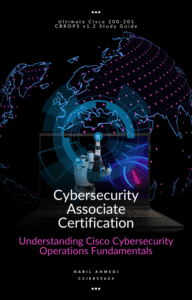Data Engineering & ETL Pipelines: Build the Backbone of Big Data Systems
In the data-driven enterprise, data engineering stands as one of the most impactful technology disciplines. Modern organizations depend on robust ETL pipelines and scalable, reliable data platforms to unlock value from vast datasets. By 2026, advanced data engineering is integral not only to analytics, but also to powering AI, automation, and critical business operations. Becoming a top-tier data engineer requires mastery of core concepts—ETL, orchestration, cloud platforms, and analytics engineering—in a landscape evolving faster than ever.
The Role of Data Engineering in 2026
Why Data Engineering Is the Backbone of Modern Business
Today’s organizations generate and consume data at a pace once unimaginable. Data engineering transforms this torrent into actionable insight. Enterprises rely on data engineers to create pipelines that ingest, transform, clean, and deliver data ready for decision-making, regulatory compliance, product development, and scientific discovery. As businesses become more data-driven, the reliability, scalability, and quality of these pipelines become existential.
Core Data Engineer Skills: What Matters Now
Must-Have Technical Competencies
Top data engineering skills for 2026 include: Mastery of SQL for efficient, complex querying and analytics, Python for scripting and automation, strong understanding of cloud data platforms like BigQuery and Snowflake, proficiency with big data tools (Spark, Kafka), designing robust ETL/ELT pipelines, orchestration with Apache Airflow, familiarity with dbt, and practical knowledge of data modeling, version control, security, and governance.
Soft Skills and Emerging Competencies
Problem-solving, business acumen, collaboration, documentation skills, and an automation mindset are now essential for success.
Understanding ETL: Extract, Transform, Load
Effective ETL (Extract, Transform, Load) is the core workflow in data engineering. Modern ETL/ELT must support batch, streaming, and hybrid workloads with strong quality, governance, and cost-efficiency.
- Extract: Gather data from varied sources (databases, APIs, files)
- Transform: Clean, filter, join, enrich data for analytics
- Load: Write data into target warehouses, lakes, or downstream systems
ETL Pipeline Architecture: Industry Best Practices
1. Scalability and Modularity
Design with modular components, flexible orchestration, and cloud-native scaling. Use workflow engines (like Airflow) to decouple logic and adopt scalable compute/storage (BigQuery, Snowflake).
2. Error Handling, Observability & Logging
Embed robust error handling (logging, alerting, retries) and detailed logging for resilience and compliance.
3. Testing & Quality Control
Automate validation (unit, integration, regression). Use data profiling and comprehensive test coverage (e.g., dbt tests) for reliability.
4. Versioning & CI/CD Integration
Version control, automated deployment, and reproducible pipeline builds are musts for reliability and auditing.
5. Real-time, Streaming & Batch Data Patterns
Balance batch and real-time (streaming, micro-batching with Kafka, Airflow) for low latency and adaptability.
6. Security, Privacy & Compliance
Encrypt data in motion/at rest, mask sensitive fields, and automate compliance checks with granular access controls.
Apache Airflow: The Modern Orchestrator
Apache Airflow is the industry standard for scheduling and monitoring data pipelines as DAGs. Airflow enables modular, observable, resilient workflows ideal for analytics and ETL. Author DAGs with Python, integrate with dbt/cloud platforms, and automate dependency management and retries. Monitor DAGs for pipeline health and use standardized templates for reliability.
Analytics Engineering and dbt
dbt (data build tool) is the leading framework for analytics engineering:
- Build modular, testable SQL transformations
- Standardize data modeling, documentation, deployment
- Automate lineage, validation, and documentation (with deep warehouse/cloud integration)
Modern Cloud Data Warehouses: BigQuery & Snowflake
BigQuery
Google BigQuery is serverless, highly scalable, and secure—ideal for analytics at petabyte scale with great Google Cloud integration, low management, columnar storage, and fast distributed queries.
Snowflake
Snowflake offers cross-cloud support, separating compute/storage/control, automatic scaling, strong semi-structured data support, easy sharing, and consistent high performance.
Real-world Data Engineering Patterns & Use Cases
- Batch ingest (ERP/CRM/data-lake feeds)
- Streaming pipelines (IoT/events)
- Data lake ingestion (ML/AI/raw storage)
- Data modeling for analytics (star/snowflake schemas)
Design for change, monitoring, and real-time feedback with metrics (lineage, throughput, error rates).
Emerging Trends: Data Engineering in 2026
1. Lakehouse Architectures
Hybrid architectures unify data lakes & warehouses for maximum flexibility and performance.
2. AI-Augmented Engineering
AI tools automate pipeline creation, quality checks, and observability.
3. Data Contracts, Governance & SLAs
Contracts define expectations and are validated/tested continuously; strong lineage and monitoring is required.
4. Democratization of Analytics
Business users access reliable, self-serve analytics via analytics engineering, dbt, and cloud tools.
Building a Career in Data Engineering
- Master core programming (SQL/Python), build and deploy real-world pipelines
- Orchestrate with Airflow, automate with dbt
- Specialize in cloud (BigQuery, Snowflake), focus on monitoring, optimization, and compliance
- Certifications (dbt, Google Data Engineer), public portfolios, open source are career accelerators
Practical Tips for Success
- Modularize and automate code, tests, and documentation
- Monitor costs, performance, data quality
- Collaborate cross-functionally with analytics/business users
- Keep learning—subscribe to community and product updates
Conclusion: Building the Future with Data Engineering
Data engineering—and ETL pipeline mastery—are essential for organizations leveraging data, analytics, and AI in 2026. Combine SQL, Python, Airflow, dbt, and cloud expertise with best practices in modularity, automation, and observability to drive innovation and transformation.
With investment in the right skills, tools, and projects, data professionals stand to unlock major value—for their organizations and their own careers—in the era of digital data supremacy.
Ready to lead in data engineering? Start with the essentials—SQL, Python, Airflow, dbt—then expand to cloud warehouses like BigQuery and Snowflake, and build portfolios that showcase your expertise. The future is yours to engineer
